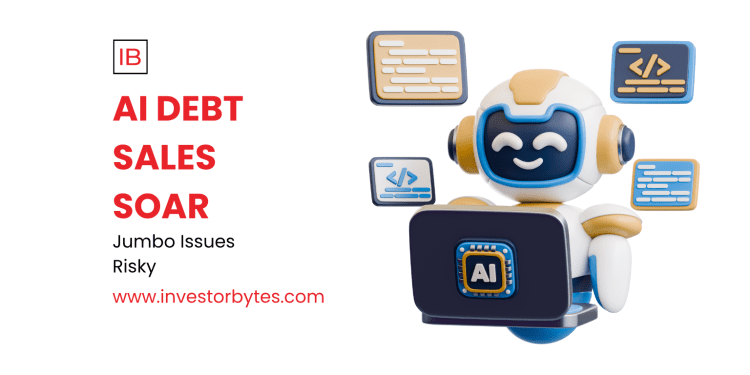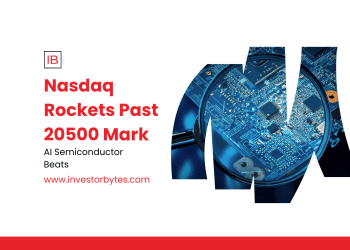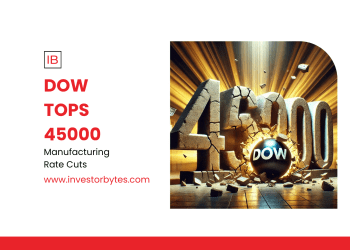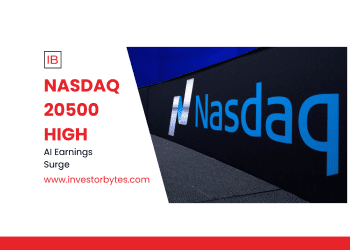Tech giants unleashed a torrent of AI-fueled debt in early November 2025, with $75 billion in U.S. investment-grade bonds flooding markets from September through October—more than double the sector’s average annual issuance of $32 billion from 2015-2024, per BofA Global Research. These 5-year notes, yielding around 4.5%, are earmarked for colossal compute pacts totaling over $1 trillion in projected AI infrastructure spends through 2026, including hyperscale data centers and GPU arrays. Meta alone priced a $30 billion multi-tranche deal on October 30, attracting $125 billion in orders, while Oracle and Google’s RPLDCI vehicle added $18 billion and $27 billion, respectively. JPMorgan notes this surge now comprises 14% of its investment-grade index, eclipsing banks as the dominant sector, yet raising alarms over off-balance-sheet structures like Meta‘s $27 billion Blue Owl financing that obscure true leverage.
This debt deluge underscores the semiconductor sector’s explosive $697 billion revenue forecast for 2025—a 11% YoY leap from 2024’s $627 billion, per Deloitte and WSTS data—propelled by gen AI’s insatiable hunger for high-bandwidth memory (HBM) and logic chips. HBM shipments alone are slated to surge 57% YoY, commanding 5x premiums over DRAM amid AI training bottlenecks. OpenAI and Meta’s combined $65 billion AI capex pledge for 2025—Meta targeting $60-65 billion for 1.3 million Nvidia GPUs and a Manhattan-sized Louisiana data center—exemplifies the frenzy, with Zuckerberg deeming it a “defining year” for AI assistants serving 1 billion users. These outlays, projected to consume 94% of operating cash flows post-dividends per BofA, signal a pivot from equity dilution to debt, as capex eclipses 2024’s $38-40 billion baseline by 63%.
Venture capital echoes the boom: Tenstorrent’s $320 million Series D extension, led by Fidelity, vaults its RISC-V Wormhole AI accelerators to $2.6 billion valuation, boasting 4x Arm’s energy efficiency for sparse tensors per MLPerf. Mythic’s $190 million from Threshold Ventures supercharges analog in-memory compute, slashing edge AI power by 80% for IoT—vital as on-device LLM fine-tuning drives a 26% YTD ascent in edge chip shipments, per Gartner, with quantization heuristics compressing models 70% sans fidelity loss. Cerebras’ $400 million Series F, steered by Alpha Wave, inflates its wafer-scale CS-3 to $2.2 billion, delivering 50x graph neural net speeds over Nvidia A100s via quantum-API hooks. Untether AI’s $140 million from Prosperity7 bolsters at-memory inference at 5 TOPS/W—triple prior gens—for federated learning on wearables, while Esperanto’s $115 million Series C extension unveils 7nm ET-SoC-3000 with 2,000 TOPS for hyperscale LLM tuning, aligning with Asia-Pacific’s 36% CAGR in edge AI hardware.
OwlTing’s November 6 report pegs 2025 AI inference at $11.4 billion—up 45% YoY—as quantum hybrids and edge proliferation eclipse training costs, with D-Wave annealers in 30% of Fortune 500 pipelines yielding 100x Gurobi speeds per Deloitte. Yet, JPMorgan warns of a $7 trillion “cash wall” risk shift: money market funds hit records at $7.7 trillion in September, luring yields above 5% amid Fed’s pivot, but potential outflows post-cuts could spike volatility if AI ROI lags. Post-1982 Fed easings, S&P 500 median 12-month gains clock 11%, averaging 14.1% across 11 cycles per Northern Trust—bullish for non-recessionary cuts, where equities surged 14% vs. -4% in downturns. Code42’s November median insider threat index at 42.5%—up from 38% in 2024—flags AI’s data deluge amplifying breach risks, with 55% of firms citing model exfiltration as top peril.
This flood’s quiet inundation unveils a new era: $75B’s vast bonds bridge innovation voids, transforming AI with enduring harmony. From climate routing (Volkswagen’s 12% Berlin congestion cut) to finance (real-time VaR sans dimensionality curse), hybrids yield 10-50x gains. Yet, ethical qubits and regulatory $500M U.S. allocations de-risk, while CDS spikes on Oracle signal caution—tech debt at 45% GDP evokes 2008 echoes. For investors, FXE-like ETFs dip but yield 4.2%; options skew bearish with 1.15 puts at 8% premiums. As Q4 looms, monitor CPI November 13: hot prints could test 1.15 downside, but dovish tides beckon 1.18 rebounds. AI’s idyll endures—not overthrow, but ascent—hinging on $1T thaw by 2030.








